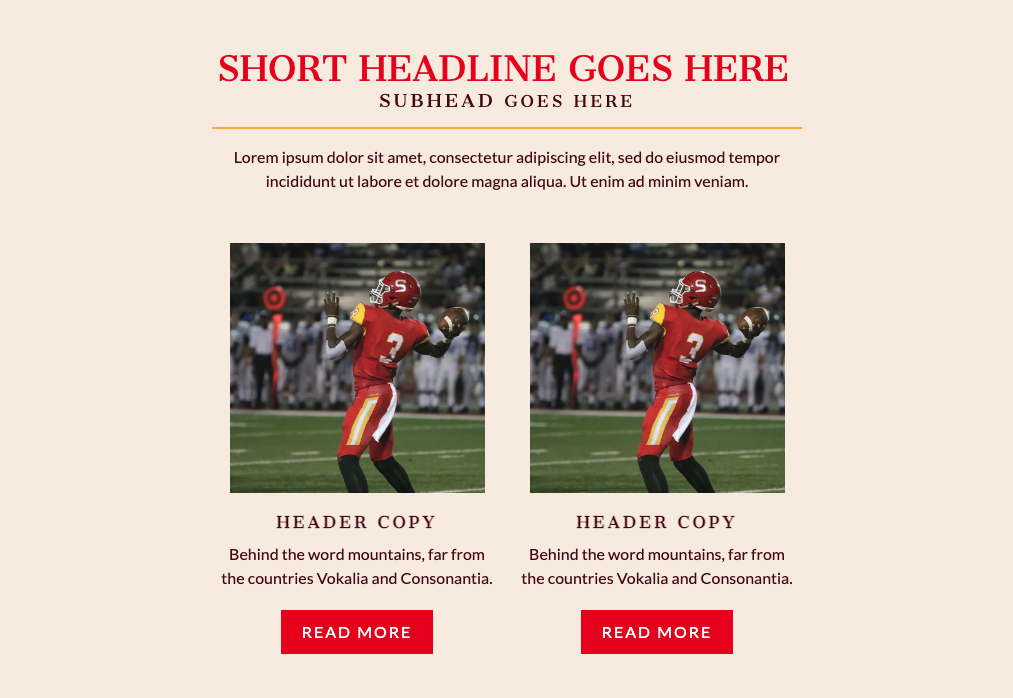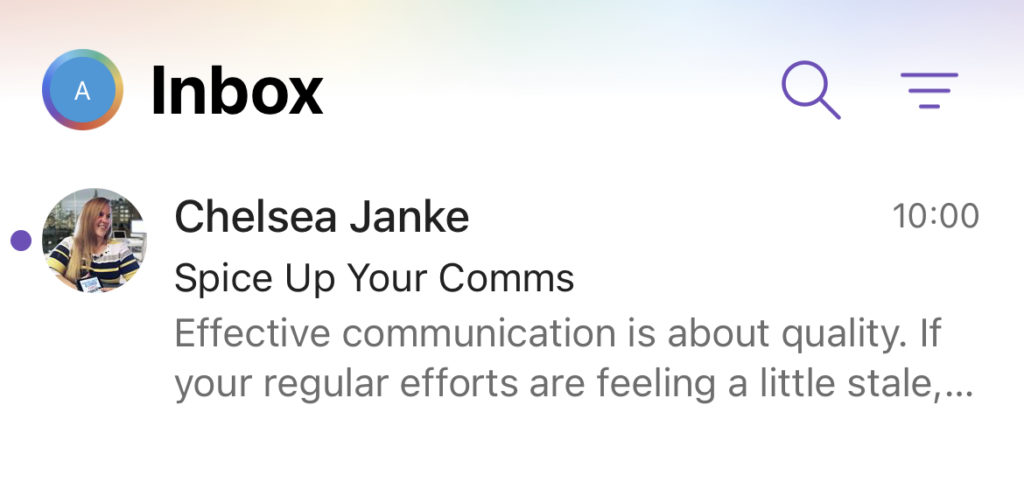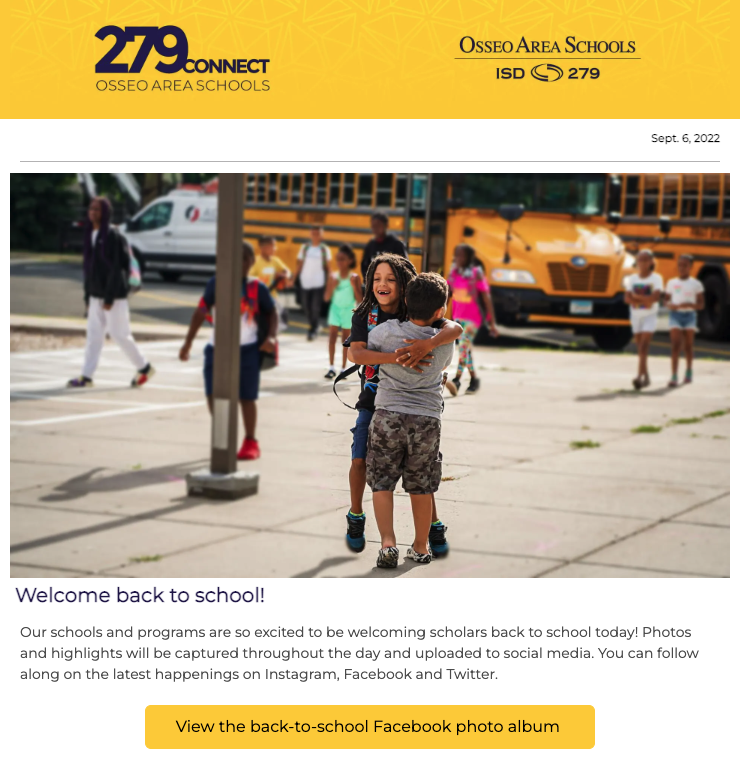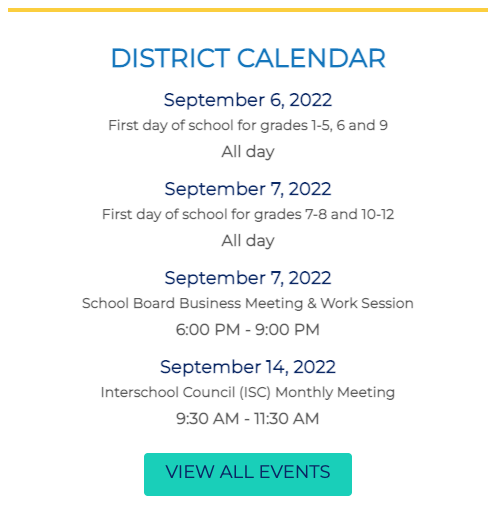Best Practices of a School Newsletter
Take a minute to look at your personal inbox. What’s sitting in there that you haven’t looked at yet? A coupon, a bill or two, and undoubtedly a few spam emails about car warranties or tropical vacations. People get dozens of emails daily and must sift through them to find important messages.
School-to-home communications are among the most critical emails families receive. Keep them in the loop by creating an engaging and informative school newsletter that doesn’t get stuck in junk mail—and doesn’t require setting aside an entire day to generate and send.
We’ve collected a few tips and tricks to help you build a robust newsletter that entices your audience to read through everything you have to share.
Who Is Your Newsletter For?
School newsletters aren’t just for your families. They can be a powerful marketing tool, giving prospective families or community residents a glimpse into school happenings and culture. Think of your newsletter as seeding the grapevine for word-of-mouth marketing.
Don’t forget your staff (including your school board). Whatever is sent to your families should also go to your staff. By equipping staff with information, they are armed to answer questions that may come their way and can better serve as positive ambassadors for your school.
As students reach middle and high school, they begin to take responsibility for their interests. Consider adding students to your regular newsletters, especially those that include information about registration for classes, activities or athletics.
Make Your Contact Lists Easy to Manage
You’re probably collecting email addresses when families enroll in your schools. Are you also asking them to visit your school website to sign-up for your newsletter, or are you simply pulling their contact information from your student information system (SIS) and uploading it to your email newsletter system? Does your system integrate with your SIS to automate your lists?
Integrating your newsletter system with your SIS ensures a good list that’s always up to date with new families and email addresses. You can communicate to your specific audiences by including additional fields—such as grade, classroom, and bus route.
Layout Your Newsletter for All Devices
Research shows that 95% of 30- to 49-year-old Americans own a smartphone, meaning most of your families are likely reading your emails on their phone. Ensure that your newsletter layout is mobile-friendly (which means no PDFs).
When choosing a newsletter tool or vendor, research the template options available. Are they optimized for mobile? Can they be easily modified to reflect your school’s visual brand identity—colors, logo, fonts, etc.?
Make sure that your layout is visually appealing. For example, using full-width color bars to separate sections will give your reader cues about how information flows.
Adding images that supplement the topic will draw your reader to what’s important to them (for example, a photo of a sea of mortarboards will draw families of seniors to important information about graduation).


Maintain a Familiar Frequency
“School communities are best served when families have timely access to the information that supports student learning,” says Andrew A. Hagen, Integrated Communications Coordinator with CEL Marketing PR Design. “Well-crafted email newsletters bring that information to them when they need it.”
Your newsletter cadence is important; strive for a frequency that isn’t overwhelming but doesn’t leave families disengaged for too long.
Too many emails in a week, and your families won’t open them. Too few, and your school front offices will start getting calls with questions that could have been answered in a regular newsletter. Some schools send a weekly newsletter and limit single-topic emails to twice per week (for example, reminders about parent-teacher conferences).
And what about the time of day? Some say 9 am to Noon, and some say 5-6 pm. The truth is you’ll have to check your analytics to see what time of day gets the most engagement. So, when choosing an email newsletter vendor, ensure they have robust analytics beyond the open and click-through rates. Continue to experiment until you find that “sweet spot.” But once you find that sweet spot, stick with it. Families will come to expect the newsletter at regular intervals.
Curate Your Content
Draw them in with your subject line
Which back-to-school email are you most likely to open?
- Riverdale High School Newsletter
- Get ready for the first day at Riverdale High School!
The best email content in the world doesn’t matter if your audience doesn’t open the email. An engaging subject line cuts through the clutter and avoids your email going to spam. But keep it relevant and action-oriented; with limited space available, avoid unnecessary words.
And your email pre-header matters. An email pre-header is what your audience sees before they open the email. If you don’t set a pre-header, it’s the first several words of your email, and you don’t want that to be the date and a link to the website version. Ideally, the pre-header compliments the subject line.

Use call-to-action buttons
Fight the urge to put your full article in your newsletter; instead, add “read more” buttons linking to your website. Remember, with most emails being read on smartphones, your email needs to be succinct.
If you have three paragraphs about picture day and no action item, readers will skip right by the topic. Add a button so that readers can add picture day to their smartphone calendar, and add another button directed to the online order form.

Draw your reader to topics with a subheading
People skim headlines for topics that are relevant to them. If your audience is inundated by long text, they won’t read past the first few sentences and may miss your key messages.
Highlight student accomplishments
Your school newsletter is a great opportunity to celebrate your students. Did the chess team win a state tournament? Did a student write an award-winning essay in the local newspaper? Give them a shout-out in your newsletter and include a photo!
Recognize standout staff
Honor your greatest asset: your staff. If you have an employee of the month program, a family email newsletter is a great opportunity to celebrate those who make your school great.
Upcoming events
Winter break is just around the corner and there’s a PTA meeting the week students return. Share this in your school newsletter and direct readers to your website calendar for the full listing of upcoming events. And, if your website has a way for families to add events to their smartphone calendar, teach them how.
We love how Robbinsdale Area Schools shares the next few upcoming events and then links to the full calendar for parents who want to see an entire month or more.

A thank you for past family engagement
The Family Fest was a huge success last month. Celebrate this, and don’t forget to add a picture of families having a blast.
Reuse content
You’re busy. Your school newsletter platform should allow you to Create Once, Post Everywhere (C.O.P.E.). By dynamically pulling in content from your website, you’ll save time while ensuring that your website content is up-to-date. And vice versa. Make sure you’re automatically archiving newsletters to your website (but not all; maybe just a year’s worth).
Maintain an Archive
If you find yourself recreating content year-to-year, an archive on your website can be your resource for starting annual content. But more importantly, an archive is a resource for current families to get an idea of what might be coming and for prospective families to get a glimpse into the rhythm and culture of your school community.
When shopping for a vendor, look for an automatically generated newsletter archive webpage, ideally, one that isn’t an iframe embed as these can cause accessibility and search engine optimization (SEO) issues.
Ongoing Evaluation
A good email system returns robust analytics of your newsletter: number of emails sent, open rate, click rate, delivery rate, bounce rate, unsubscribe rate, spam report rate, and more.
By studying this data, you can further refine your content strategy to continue engaging your school community. If you see that links toward the bottom of the email are getting only a few clicks, perhaps your entire email is too long. Consider fewer topics and shorter copy with more call-to-action buttons.
Whether you’re developing a district-wide newsletter or a regular school communication, start by creating processes that serve you. Partner with principals to develop practices and cadences that support student learning and accurately mirror the happenings within your school system.
Published on: September 29, 2022